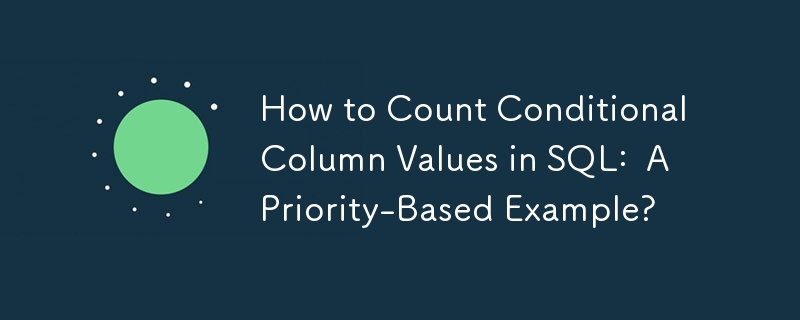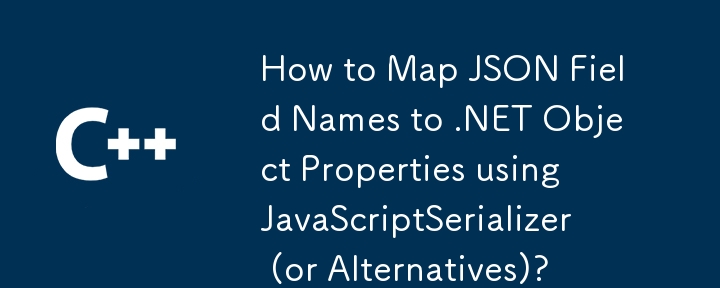Found a total of 10000 related content

Unveiling Runtime Context with PHP's Eight Magic Constants
Article Introduction:PHP has eight magic constants that change automatically according to usage location for debugging, logging, and dynamic functions. 1.LINE returns the current line number, which is convenient for positioning errors; 2.FILE returns the absolute path of the current file, which is often used to include files or log records; 3.DIR returns the directory where the current file is located, which is recommended for path reference; 4. FUNCTION returns the current function name, which is suitable for function-level debugging; 5.CLASS returns the current class name, which contains namespace, which is suitable for class context recognition; 6.TRAIT returns the current trait name, which points to the trait itself even when called in the class; 7.METHOD returns the class name and method name of the current method (such as Class::method), which is used for tracing
2025-07-30
comment 0
618
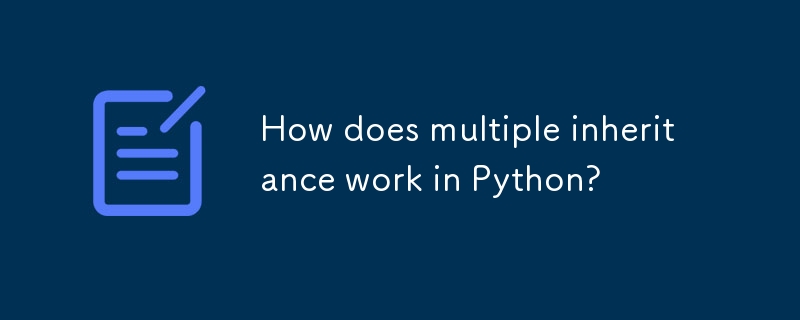
How does multiple inheritance work in Python?
Article Introduction:Python supports multiple inheritance, allowing subclasses to inherit methods and attributes from multiple parent classes. When multiple parent classes exist, Python determines which parent class method to call through MRO (method parsing order); MRO follows C3 linearization rules and can be viewed through .mro(). For example, the MRO of classC(A,B) is [C,A,B], calling C().do_it() will execute the method in A. If you need to run the methods A and B at the same time, you can call them explicitly. Multi-inheritance is suitable for combining different behaviors. The common pattern is to use the mixin class to achieve specific functional extensions. If LoggerMixin adds logging function, DatabaseSaver implements data storage, UserManager inherits two
2025-07-18
comment 0
942
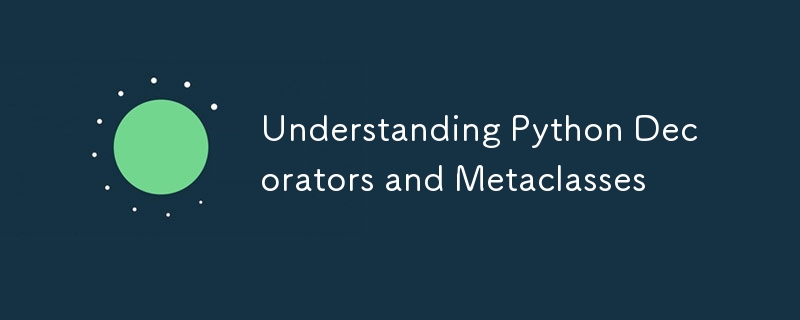
Understanding Python Decorators and Metaclasses
Article Introduction:Decorators are functions used to modify other functions or class behaviors without changing the source code. Metaclasses are used to create class control classes. Decorators are often used for code reuse, separation of concerns and more concise syntax, such as permission checking, logging, etc.; metaclasses are suitable for the creation of unified control classes, automated registration mechanisms, and mandatory coding specifications, such as ORM framework development; the execution order when decorators are nested is from bottom to top, and functools.wraps can be used to retain the original function information, and metaclasses usually rewrite the __new__ method; the difference between the two is that the function objects are different, the decorators are targeted for functions or classes, and metaclasses are targeted for class definitions. The use of decorators is more common in frequency, and the understanding of the difficulty is more complicated.
2025-07-24
comment 0
532

Can a PHP function return an object?
Article Introduction:PHP functions can return objects. 1. You can create objects directly in the function and return them, such as using stdClass or custom class instances; 2. It is often used to encapsulate data in the MVC framework to improve code readability and maintainability; 3. Support type prompts to enhance code robustness; 4. Pay attention to ensuring that the object is initialized correctly and handle possible failures, such as returning null or throwing exceptions.
2025-07-06
comment 0
556
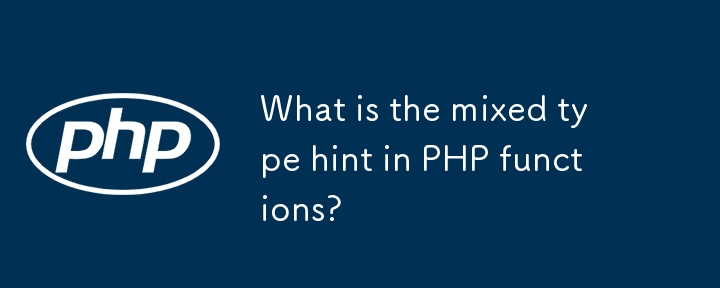
What is the mixed type hint in PHP functions?
Article Introduction:Mixed type prompts used in PHP to indicate that function parameters or return values ??can accept any type and are suitable for scenarios where data types are uncertain. Its main uses include handling dynamic content, building general tool functions and framework callbacks. However, using mixed will bring about problems such as reduced type safety and restricted IDE support, so it should be used only if necessary. Alternatives include using joint types, interface or base class constraints, and manual type checking to improve code stability and readability.
2025-07-07
comment 0
828

How to create a helper php function in Laravel?
Article Introduction:There are three common ways to create auxiliary PHP functions in Laravel. 1. Use helpers.php file: Create Helpers.php in the app/ directory, write the function, add a path in the autoload.files of composer.json and run composerdump-autoload to implement global calls; 2. Use macroable features: add custom methods to existing Laravel classes such as Collection through the macro() method, which conforms to the framework design style; 3. Create service classes: suitable for complex logic, such as creating HelperService class encapsulation methods and through dependency injection or app
2025-07-22
comment 0
410
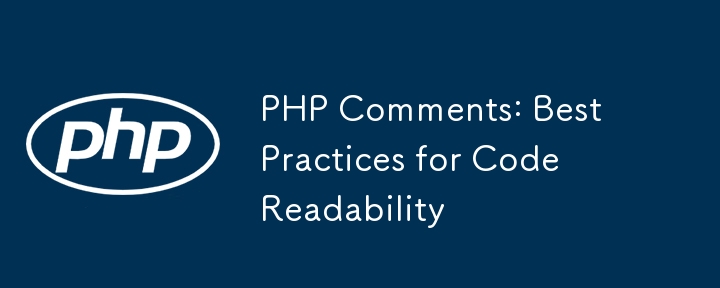
PHP Comments: Best Practices for Code Readability
Article Introduction:The core of writing PHP comments is to improve the readability and maintenance of the code. Comments should explain "why" rather than "what was done", for example, stating that splicing names use spaces instead of template strings to be compatible with older versions of PHP. Really worth noting places include bypassing framework restrictions, temporary fixes to bugs, or sources of specific business rules. Each function and class should have a complete specification of comment blocks, including function description, parameter type, return value, whether an exception was thrown, and optional author or creation time. The comments in the line should be concise and effective, suitable for explaining complex judgments, marking special treatments, and reminding of side effects. It is also recommended to use TODO and FIXME to mark to-dos or issues to be fixed, and to clean up useless comments regularly. The more comments, the better, the key is to express them accurately
2025-07-17
comment 0
443
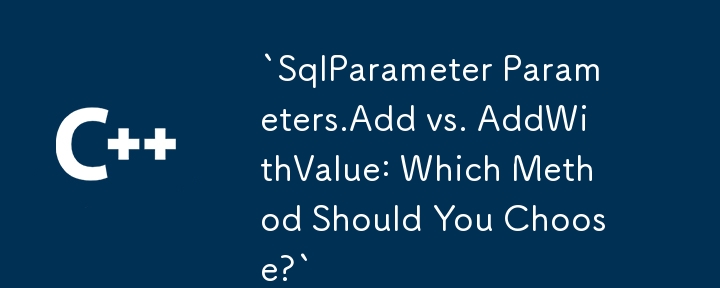

Dave The Diver: How To Catch Spider Crabs
Article Introduction:In Dave The Diver, there are some creatures that are not easy to catch. Or, catch alive that is. The spider crab is one of those very species, making it seem like the only way to bring these crustaceans back up to land is to viciously crack them up w
2025-01-10
comment 0
903

Prepare for Interview Like a Pro with Interview Questions CLI
Article Introduction:Prepare for Interview Like a Pro with Interview Questions CLI
What is the Interview Questions CLI?
The Interview Questions CLI is a command-line tool designed for JavaScript learners and developers who want to enhance their interview
2025-01-10
comment 0
1518
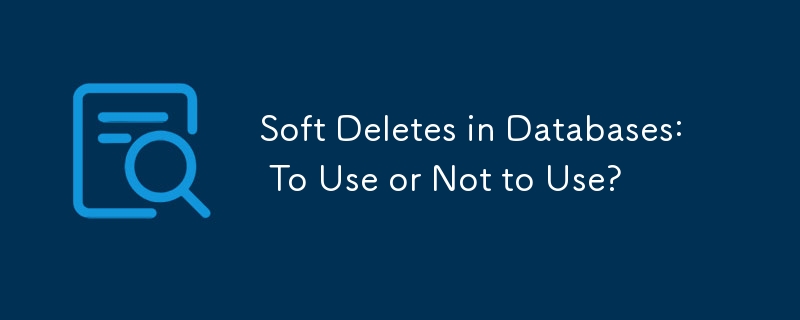
Soft Deletes in Databases: To Use or Not to Use?
Article Introduction:Soft Deletes: A Question of DesignThe topic of soft deletes, a mechanism that "flags" records as deleted instead of physically removing them, has...
2025-01-10
comment 0
1115









